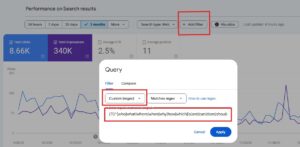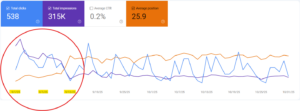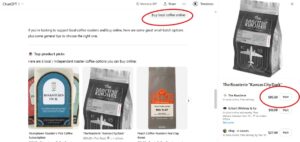By Eric Hoppe, Crowd Content
The best website location pages take a significant amount of time and effort to craft, but the results can be extraordinary. More than half of all web searches now include local intent, with phrases such as “city name,” “near me,” and “nearby” tacked onto Google’s autocomplete algorithm in many instances. As such, it’s more crucial than ever that businesses ensure that their websites include location pages for SEO purposes.
Along with a well-maintained Google My Business (GMB) profile that accurately targets the local pack, local landing pages are an excellent way to optimize your website to capture local search engine traffic that doesn’t go to the local pack. For companies that don’t have physical locations in each location they target with SEO and therefore can’t get a GMB profile for that location, ranking for the organic results outside the local pack is critical. And in some industries, the local pack just isn’t that important, which can make local landing pages even more valuable.
When done correctly, location pages give buyers valuable information, drive traffic to your site, and boost your ranking on SERPs. But it can be tricky to scale up.
Let’s look at some ways your growing businesses effortlessly scale up location pages.
What Is Local SEO?
Local SEO includes your whole strategy for targeting local search engine queries made by people in your local area. One of the main aspects of local SEO that marketers focus on is getting into the local pack (the map with business listings seen on many local searches) with a Google My Business account.
While this is absolutely a strategy you should harness, there’s another, lesser-known way of driving geographically-relevant traffic: location pages.
What Are Local Landing Pages?
Local landing pages can go by several names. Location pages are interchangeable. You’ll also likely hear about city pages, state pages, neighborhood pages, etc., which are all types of location pages.
Location pages for SEO are a way for companies to increase their visibility on search engines when people look for services within their service areas. These landing pages contain useful information regarding the services you offer in the context of the locale you’re targeting and other related information readers would find valuable.
While they’re great for SEO, location pages are also an important part of your site’s content and can be extremely helpful for your visitors.
If you’re a community-facing business, you’ll usually have a store or an office for people to visit. Community-facing firms might also be local contractors that service a particular geographic area, such as HVAC or cleaning companies.
In these cases, you can get a GMB account and get featured in the local pack. Your homepage will also probably be optimized for your primary service location, so you could rank in the search results beneath the local pack.
But what if you want to target locations where you don’t have a physical location?
Why Are Location Pages So Important?
If your business has one location, relying on Google My Business might be sufficient depending on your industry. However, if you have more than one location or operate across a big city or metro area, location pages are an excellent way to reach a wider audience. Each GMB listing requires a physical location, so you can’t get into the local pack in places where you don’t have a store or office.
And even if you can get a GMB listing for a region, having a location page that also targets that traffic offers you additional traffic.
Local landing pages are a legitimate way of capturing local organic traffic and a great way of combining SEO and content marketing. Search engines don’t just look for basic markers to decide how high up location pages rank on SERPs.
When creating pages for multiple locations, each location page needs to be unique and offer the reader genuine value with relevant keywords and high-authority links.
Both Google and your readers expect your content to be well written and easy-to-read.
Your content should include names of local sights and establishments, include local data, and reference local bylaws, anything you can do to make it sound as if someone who knows the location wrote it. The last thing you want is generic content.

How to Drive SEO Results Using City Pages
Keyword stuffing and low-quality content are usually filtered out by Google’s algorithm, which is very selective about what ranks high up on SERPs. We’ll discuss what not to do in the next section, but for now, let’s have a look at how to write the best website location pages.
High-Quality, Relevant Content
For the best results, create a targeted city page for each area that your business operates in. While this might be time-consuming, it gives your website the chance to rank for keywords necessary to capture local search traffic. Additionally, it funnels website visitors effortlessly through the conversion process.
Google’s algorithm changes all the time, and you must keep up. As such, effective city landing pages are updated continuously. Don’t just talk about specific services that you offer; include relevant statistics and local data to rank even higher. As mentioned before, make it sound like someone who lives in the area wrote the content.
Another thing to keep in mind is making sure you’re creating comprehensive content. When you do keyword research you should identify a number of related topics and keywords (often semantically related) that searchers are interested in. Make sure your content addresses all of these in a comprehensive manner, as comprehensive content has been shown to rank well.
A Strong CTA
The call to action is the part of the page that drives the website visitor to make a purchase, sign up for a newsletter, or get in touch. Search engines expect to see a strong CTA, and it’s the ideal way to help potential buyers follow through on their intention. Visitors appreciate them, too, as it makes it easy for them to take action.
Not only does this help you get more leads and sales, but it keeps your visitors on your site. Users visiting multiple pages can also improve your behavioral metrics like time on site and bounce rate, which seems to indirectly boost search engine rankings through RankBrain.
Simple Navigation
If search engines can see that you’ve added keyword-rich location pages onto your website but they don’t link anywhere useful, they won’t like it. As such, it’s essential that you make it easy to navigate through the site using the location pages. Lots of companies opt for adding links to geo-targeted location pages in footers or on a specific location linking page.
SEO-Friendly
To be genuinely SEO-friendly, you need to find the perfect balance between including the right keywords and meeting a reader’s intent. If people visit a webpage but quickly bounce because the content isn’t engaging or well-written, you’ll slide down the search engine results page rankings.
When doing keyword research, you’ll find a primary keyword that should be placed prominently in your title tags, h1, early in your content, and in image alt text. But you’ll also find related keywords that you might include in other sections of your page.
While placement is important, these are clues to what your audience wants to read about and should guide the topics you cover. This goes a long way in creating comprehensive content.
Link to High-Authority Local Sources
Another crucial component of the best website location pages are links to high-authority local sources. This might include linking to relevant state codes and regulations, recent local news articles from a recognized publication, or climate data.
Any links you can offer that add value to your readers, making your page a resource, improves the quality of your page.
Longer Is Usually Better
More is often better when it comes to creating location landing pages that convert. Search engines want to see content that’s useful to lots of people, which they can measure by analyzing the time it takes to bounce.
But, don’t write a lot just for the sake of it. When researching your keywords, you’ll identify the topics you need to cover; make sure your page comprehensively covers them, and you should be good.
Another trick is to audit the pages that are already ranking for the search terms you want to rank for. Look at how many words these pages have and what topics they cover. You’ll want to outdo the competition on both fronts.
There are great tools out there that automate this job. Check out Ink, MarketMuse, and SurferSEO.
Avoid Creating Doorway Pages
Many years ago, Google introduced what it called the Doorway Pages penalty.
This penalty targets companies that create one city page and simply copy and paste a different city name for each location page. Google refers to these paint-by-number landing pages as doorway pages or gateway pages because they spam keywords to generate traffic without providing the end-user with valuable content.
If you don’t focus on creating high-quality location pages, you may end up creating doorway pages that end up getting your website penalized.
These pages are often not part of the site’s navigation and exist only to rank for long-term keywords and then funnel traffic elsewhere on the site. Google doesn’t like that. This is another reason why it’s crucial that you ensure the city pages are an important part of your site and featured prominently in your navigation.
Harness the Power of Location Pages for SEO
If you’re looking for some digital marketing bright sparks to help you level up your local SEO strategy, call Rank Fuse today at 913-703-7265 or get in touch online. Our team of digital marketing experts can help you craft location pages that rank and bring in new business for your company.

About the Author:
Eric has been working in marketing and product management for over a decade with companies in the software, eCommerce and content creation spaces. He’s particularly drawn to both content marketing and SEO and is excited that the two areas are increasingly converging. While he’s pretty serious about marketing, he does love to drop a great dad joke on occasion.




